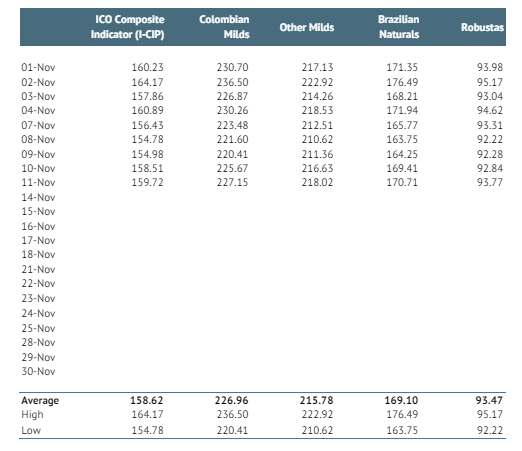In the world of coffee, the journey from farm to cup is a complex and fascinating one. As a seasoned coffee wholesaler based in Dubai, we’ve had the privilege of working closely with both roasters and individual enthusiasts who use raw coffee. Our experience has given us unique insights into the intricacies of sourcing green coffee and choosing the right supplier.
In this blog post, we aim to share our knowledge and expertise to help you navigate the green coffee market. We’ll start by defining some key terms, then delve into the factors to consider when choosing a green coffee supplier, and finally, share some tips and strategies based on our own experiences.
Green Coffee: Green or Raw coffee refers to coffee beans that have been harvested and processed but not yet roasted. The quality of green coffee can significantly impact the flavor of the final product, making it a crucial factor for roasters and coffee enthusiasts.
Coffee Supplier: A coffee supplier is a company or individual that provides green coffee beans to roasters and other buyers. Suppliers can range from large-scale importers to small, specialty companies that focus on specific regions or types of coffee.
Roaster: A roaster is a person or company that transforms green coffee beans into roasted coffee through the process of heating. Roasters often work closely with suppliers to source beans that meet their specific flavor profile and quality standards.
Choosing a green coffee supplier involves more than just finding someone who can provide coffee beans. It requires a deep understanding of your own needs and preferences, as well as a thorough evaluation of the supplier’s offerings, reliability, and ethical practices. In the following sections, we’ll explore these aspects in more detail, providing you with a comprehensive guide to finding the perfect green coffee supplier.
Understanding Green Coffee Characteristics
When it comes to green coffee, the characteristics of the beans play a crucial role in the final taste of your brew. Here are some key factors to consider:
- Type of Coffee Beans: The type of coffee beans, such as Robusta or Arabica, can greatly influence the flavor profile and roasting requirements. For instance, Robusta is known for its strong, bold flavor and high caffeine content, making it a popular choice for espresso blends and instant coffee. On the other hand, Arabica is cherished for its unique flavor profile, characterized by notes of chocolate, spice, and nutty undertones.
- Origin of the Beans: The origin of the beans can have a significant impact on the flavor and aroma of the coffee due to varying conditions like soil, humidity, and climate. We recommend trying coffee from different countries and regions to find a suitable coffee for you. Also, knowing the specific farm where the coffee was grown can be a sign of a good quality batch.
- Altitude: The altitude at which the green beans are grown can affect the flavor of the coffee. Generally, beans grown at higher altitudes, which means lower temperatures, develop more complex taste profiles, sweetness, and typically more acidity compared to those grown at warmer temperatures.
- Uniformity of the Beans: Ensuring that the coffee beans are relatively uniform in size and color is important for achieving repeatable and consistent roasts. The same color means they have been treated and ripened in similar ways, allowing them to reach the same level of roast simultaneously. Similarly, beans of equivalent size will roast at the same speed.
- Ethical Sourcing: In the fast-growing coffee industry, it’s essential to buy ethical coffee to protect the rights of coffee farmers. If you’re unable to buy directly from farmers, we suggest selecting importers with a reputation for sourcing beans in a fair and environmentally friendly manner. The importer should be committed to transparency and provide full traceability of the green coffee.
For more detailed information on these topics, check out our Ultimate Buyer’s Guide on wholesale coffee beans.
How Much Green Coffee Do You Really Need?
When sourcing green coffee, the volume you require can greatly influence your interactions with producers. While you can source almost any size of micro-lot for a limited-edition coffee, the exact lot size you’re looking for might not always be available. It’s important to be flexible and specify your volume as a range with a minimum order quantity (MOQ). This flexibility can determine whether producers will be able to fulfill your request at all.
Related post: The True Taste of Specialty Coffee: Your Essential Guide.
What Certifications Matter for Your Green Coffee?
Certifications can play a significant role in the sourcing of green coffee. Even if you’re not paying for the certification stamp, the price of certified coffee will remain higher than that of conventional coffee. This is because adhering to the strict standards imposed by certifying bodies increases the overall costs of production. Therefore, it’s crucial to make your need (or lack thereof) for certification crystal clear. Some producers farm organically but are not organic certified, for example. Others can only sell certified coffee if the transaction goes through a cooperative. Understanding what certifications matter to you and your customers can help guide your sourcing decisions.
Related post: 10 Essential Coffee Certifications: A Beginner’s Guide.
Green Coffee Pricing: What Factors Influence the Cost?
When choosing a green coffee supplier, understanding the factors that influence the price is crucial. Here are some key considerations:
- Price Requests: Requesting prices from different suppliers can help you discover various options and potentially land a more affordable deal. However, it’s important to note that producers won’t consider requests with prices below the commodities price that don’t take into account differentials as a minimum.
- Calculating the Minimum Price: To get an idea of the minimum price, you can look at the International Coffee Organization’s (ICO) flat prices. The calculation involves several steps, including getting the current price, subtracting it from the latest ICO flat price, and applying the resulting differential to the futures price at your expected delivery month.
- Volume and Pricing: The volume of green coffee beans you buy can significantly impact the price. Green coffee typically arrives from coffee-growing regions in bags weighing 60-70 kilos. If you’re just starting out, you might initially buy smaller amounts, which means someone had to break down the full-sized bags into smaller amounts and repackage them. This additional work is reflected in the price, so you’ll likely pay more per pound for less green coffee.
- Shipping Considerations: Note that 60 kilos is the largest amount of green coffee that can be shipped via FedEx. Heavier full bags must be shipped on a pallet, which can be expensive when you’re buying one bag at a time, often costing more than the coffee itself.

In US cents/lb
Wholesale Green Coffee Beans in the UAE & Middle East
At MeloCoffee, we take pride in supplying the highest quality green coffee beans to the vibrant markets of the UAE and the broader Middle East. Our strategic partnerships and expertly curated selections have established us as leaders in the specialty coffee industry.
With the UAE’s coffee market experiencing rapid growth, fueled by the expansion of the Dubai Multi Commodities Center (DMCC) and a rich, evolving coffee culture, MeloCoffee is at the forefront, offering a variety of top-grade green coffee beans sourced directly.
- Direct Trade Relationships: We journey into remote coffee regions to bring you exclusive coffee varieties. Our direct trade and ethical sourcing practices benefit both farmers and buyers.
- Customizable Orders: Whether you’re a small boutique roaster or a large-scale distributor, MeloCoffee offers flexible order sizes and shipping options tailored to your unique needs.
- Expert Support and Compliance Ease: Navigating the import regulations in the UAE can be complex. At MeloCoffee, we offer comprehensive support, handling everything from customs documentation to Arabic labeling requirements, making the import process seamless and compliant.
Partner with MeloCoffee to enrich your offerings with some of the world’s most sought-after green coffee beans, perfectly suited for the diverse palates of the Middle East market. Whether you’re looking to introduce new flavors to your lineup or need a reliable supply of high-quality beans, MeloCoffee is your trusted partner in the thriving UAE coffee trade.
If you’re also interested in exploring various coffee blends and different types of roasts, feel free to delve into our other blog posts on these topics. You can read about Choosing Best Coffee Brand & Blend For Business — Buyer Guide and Exploring 18 Roasted Coffee Bean Varieties & Bean Types to further enrich your coffee knowledge.
Frequently Asked Questions
In the green coffee market, importers and suppliers play distinct roles. Green coffee suppliers typically purchase full-sized bags from importers and then sell them in smaller quantities at a markup. This caters to those who may not have the capacity or desire to handle the challenges of buying and storing full-sized bags. On the other hand, green coffee importers operate on a wholesale basis, selling large quantities of green coffee beans to businesses.
They usually offer lower prices but require you to buy full-sized bags. These bags can be challenging to store properly and keep fresh, especially if you’re roasting small amounts over time.
Direct sales, or buying directly from coffee producers, can offer benefits such as improved traceability and transparency. It allows you to visit the farm, establish relationships with the workers, and evaluate the coffee before buying. However, this approach also comes with its own set of challenges. For instance, dealing with tax, shipping, and import regulations can be complex and time-consuming. These tasks require a certain level of expertise and familiarity with the process. Additionally, the logistics of storing and preserving large quantities of green coffee beans can be daunting, especially for smaller businesses or those new to the industry. Therefore, while direct sales can be rewarding, they also require careful planning and consideration. If you’re a small business or lack the necessary expertise, it might be more practical to work with established importers or suppliers until you’re ready to handle the complexities of direct sales.
Green coffee beans, when stored properly, can last for up to a year without significant loss of quality. However, for the best flavor, it’s recommended to use them within six months of purchase.
Green coffee beans should be stored in a cool, dry place away from direct sunlight. They should be kept in an airtight container to protect them from moisture and air. It’s also important to keep them away from strong odors, as they can absorb smells easily.

